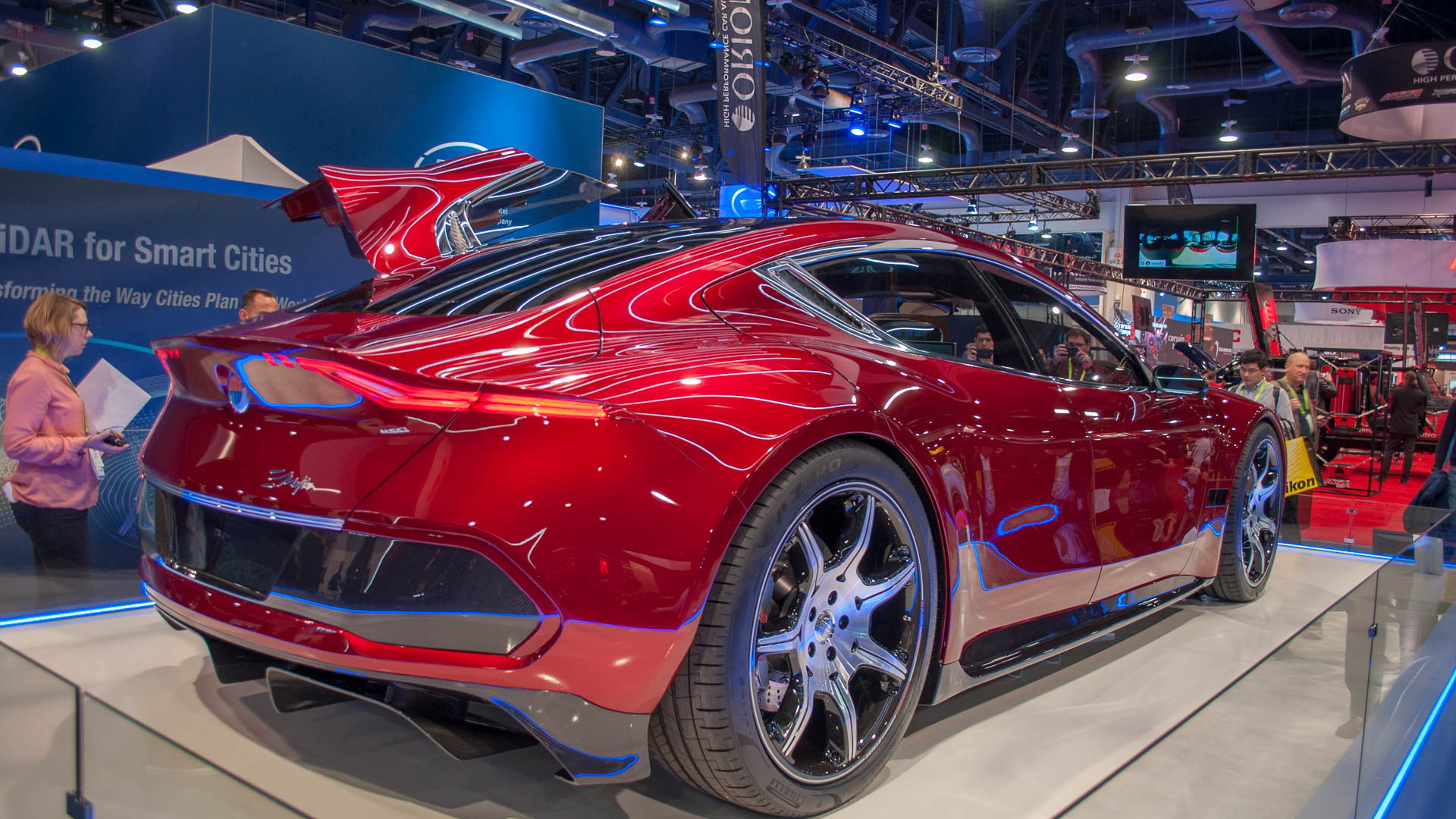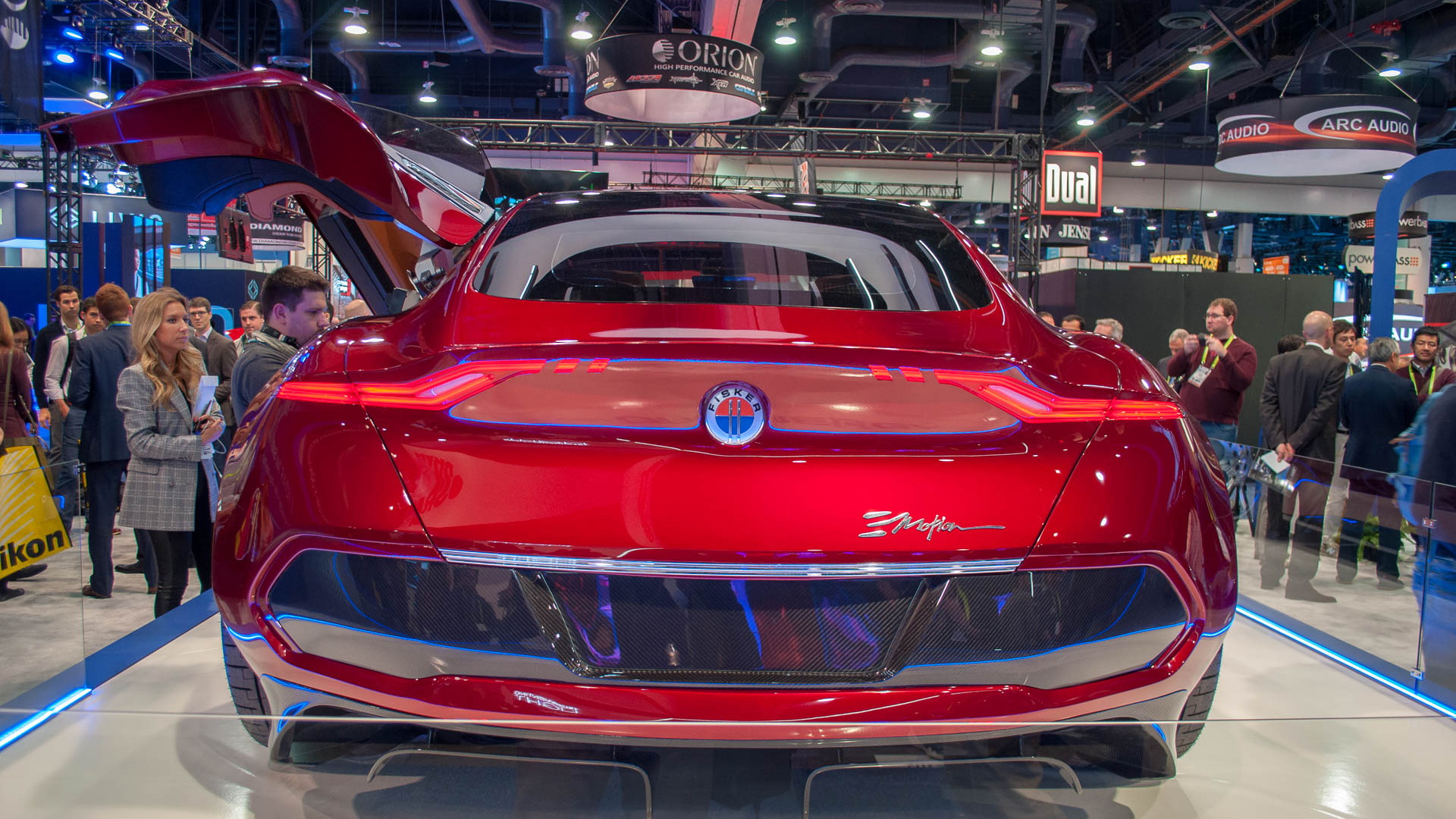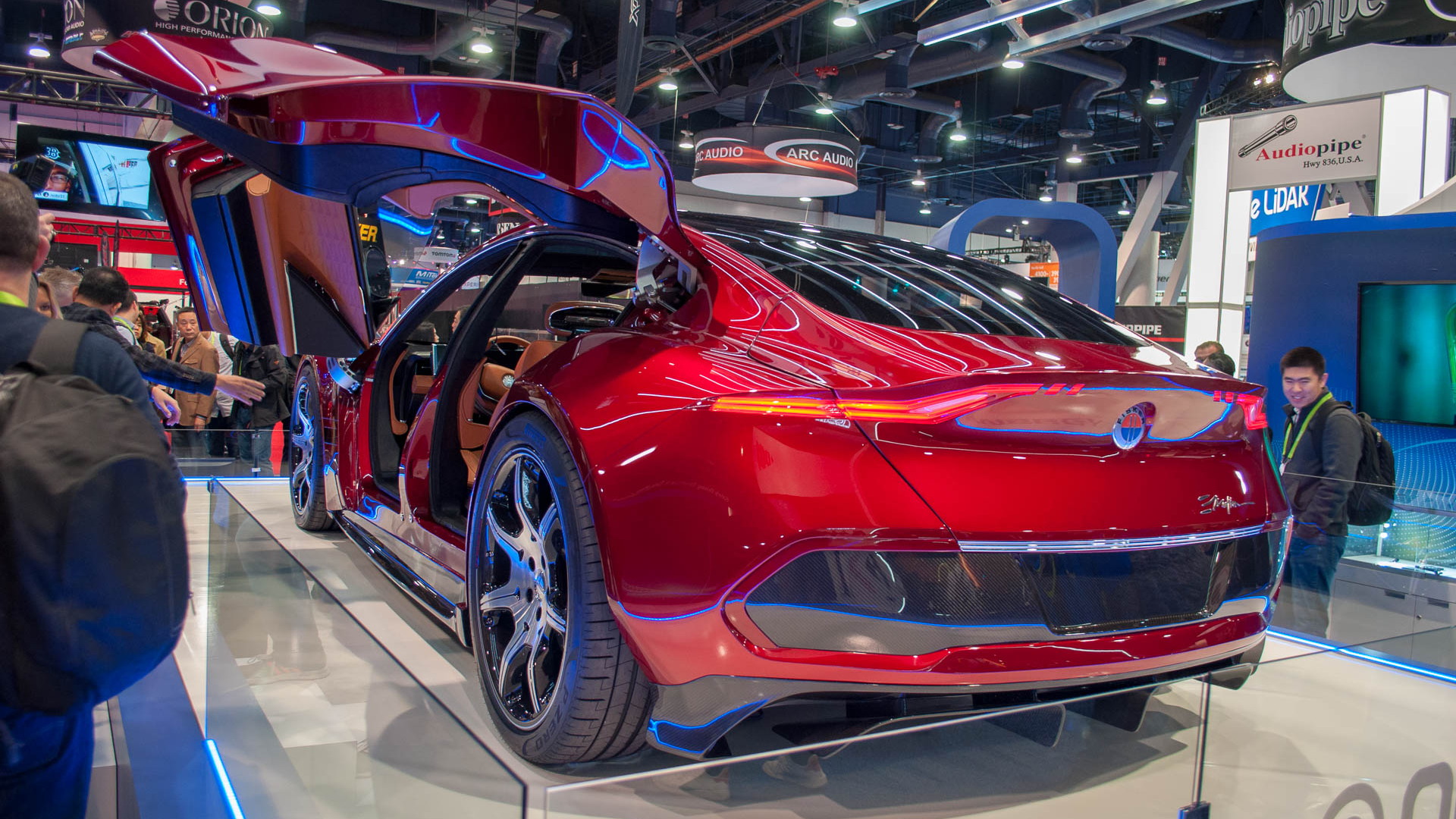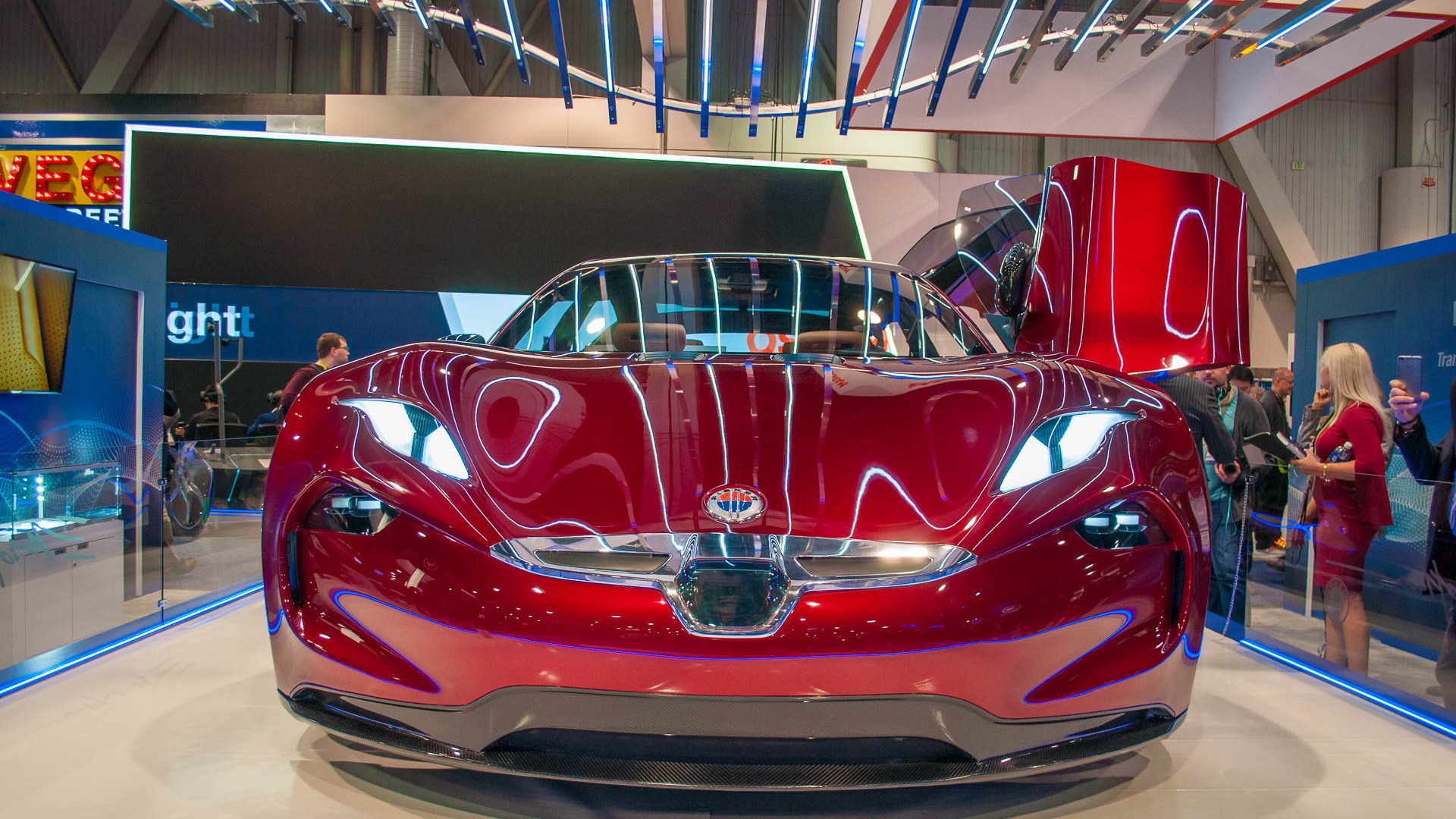The rebooted Fisker unveiled its highly anticipated EMotion electric car on Tuesday at the 2018 Consumer Electronics Show.
The car is a mid-size sport sedan with all-wheel drive and ample space for four, and it also comes with gullwing doors that you typically find on supercars.
Unlike Fisker’s previous attempt at an electric car, the ill-fated Karma, the EMotion doesn’t rely on a range-extender to deliver its claimed 400 miles on a single charge. The range is made possible by a lithium-ion battery sourced from leading battery supplier LG Chem, and puts Fisker at the forefront of electric cars, should the EMotion meet its targeted launch date of late 2019. Tesla’s Model S P100D is the current leader with a range of 335 miles.

Fisker EMotion
However, Fisker is working on more advanced solid-state batteries that could potentially deliver 500 miles of range and charge times as low as one minute. Solid-state batteries, considered the holy grail for the mass adoption of electric cars, use solid electrolytes rather than the liquid type common to lithium-ion batteries. In Fisker’s case, its solid-state battery delivers 2.5 times the energy density of a similar sized lithium-ion battery. It’s also said to be less prone to overheating.
And Fisker is looking beyond the automotive industry for applications of its battery. The company says personal electronic devices such as mobile phones could be using the battery tech as early as this year. Fisker says automotive applications won’t be ready until sometime after 2020. The biggest hurdle is manufacturing the batteries economically on the mass scale required for cars.
Fisker was also looking at graphene batteries at one point. However, the company and its former battery partner Nanotech dissolved a joint venture to develop the batteries last summer.
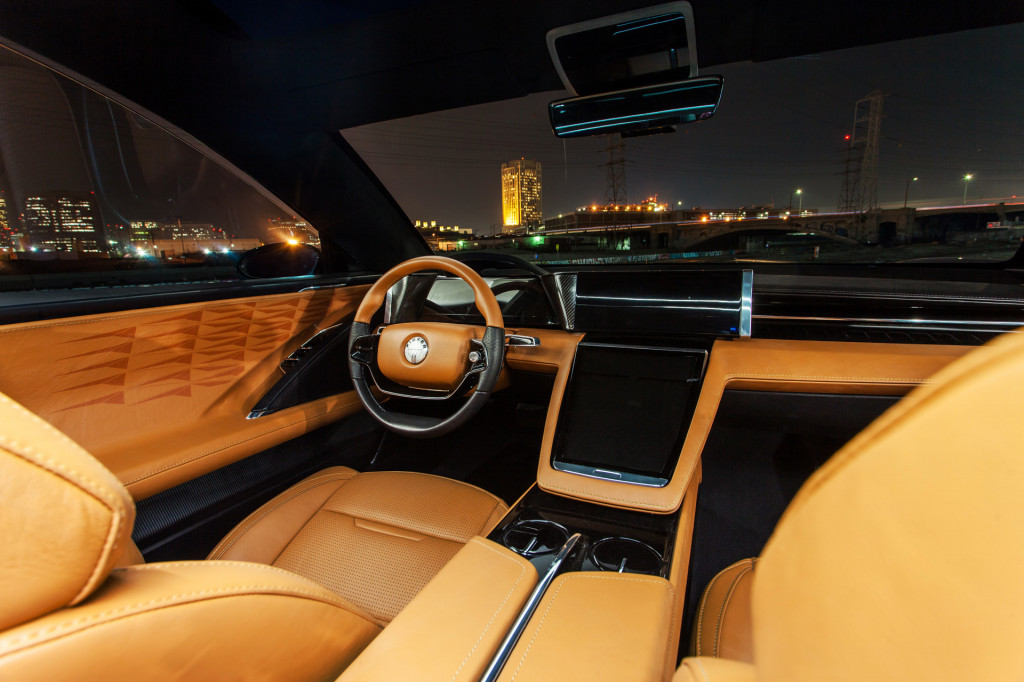
Fisker EMotion
Few specifics on the rest of the EMotion's powertrain have been revealed but expect the all-wheel-drive system to be made by having electric motors at each axle. The claimed top speed is 161 mph.
Another key technology on the EMotion is Quanergy’s S3 lidar sensors, described as the world’s first affordable solid-state lidar sensor. The sensor is small enough to fit in the palm of your hand and scans in all directions, and because there are no moving parts the performance and reliability is said to be superior to conventional lidar sensors. The sensor is part of the EMotion’s suite of self-driving technology which Fisker says will offer up to Level 4 capability. This is where a car can operation on its own in select conditions for extended periods of time.
Beyond the car’s breakthrough technology, Fisker is also promising plenty of luxury. The EMotion rides on 24-inch carbon fiber wheels and features a cabin lined in more carbon fiber plus plenty of leather. A vegan option will also be available, Fisker says. Also available will be a 27-inch curved screen for rear entertainment, a 5-seat layout with reach bench, and an electrochromic glass roof that can go from transparent to full tint at a push of a button.

Henrik Fisker
Fisker plans to build the EMotion in the United States. The company will announce a plant location in the second half of 2018. Interested buyers can place a $2,000 deposit for the car via Fisker's website, and the targeted starting price is $129,000.
“With the EMotion, we’re introducing edgy, dramatic and emotionally-charged design/proportions complemented with technological innovation that moves us into the future,” Fisker founder and namesake Henrik Fisker said at the reveal. “We’ve also made the seemingly impossible, possible with our scientists spearheading the breakthrough in flexible solid-state battery technology, which is the next generation in charging everything from your personal cell phone to enabling mass adoption of electric vehicles due to unprecedented ranges and lighting fast charge times.”
For more from CES, head to our dedicated hub.


